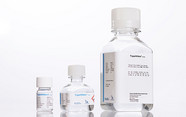FDA Plans for Shorter Drug Reviews
Martin A. Makary and Vinay Prasad believe that “rapid or instant reviews” could be possible at the FDA
Kerri Miller | | 2 min read | News

A viewpoint published by FDA Commissioner Martin A. Makary and Deputy Commissioner Vinay Prasad has outlined a number of new initiatives, including plans to shorten drug approval times. Here’s a rundown of some of the key points.
Generative AI in regulatory review
On May 8, 2025, the agency began its first generative AI–assisted scientific review pilot. The AI system performs a first-pass review of application documentation – reportedly often exceeding 500 000 pages – and generates standardized analytical tables.
The FDA is also exploring AI-based toxicity prediction using computational modeling and chip technology to reduce development time and reliance on animal testing.
Advisory committee and industry changes
To address potential conflicts of interest, the FDA has removed industry representatives from all advisory committees where statutorily permitted. The authors cited the agency’s past approval of oxycodone for chronic pain as a precedent for regulatory reform, describing it as "the FDA’s illegal approval of oxycontin for chronic pain based on a 14-day study, the immediate hiring of the former FDA regulator by Purdue Pharma, and a subsequent epidemic that killed approximately 1 million people in the U.S.”
Postapproval monitoring with big data
The FDA intends to leverage the availability of health data and cloud computing for real-time product monitoring. Causal inference methods using nonrandomized data – including target trial emulation – may provide “actionable causal conclusions” at lower cost than randomized controlled trials. The use of big data may allow the agency to reduce the traditional requirement of two pivotal trials to one for some products, particularly those that target rare diseases.
Generic and biosimilar drug development
While the FDA is legally prohibited from considering price in benefit-risk assessments, the agency plans to address cost indirectly by expediting generic drug approvals and “massively streamlining the burden to develop biosimilar compounds,” according to the viewpoint.
They added that “most large pharmaceutical companies spend more on marketing, including direct-to-consumer advertisements that can be misleading, than they spend on research and development.”
Public health context
The reforms are being developed in response to current epidemiologic trends. The authors claim that 40 percent of US children have a chronic medical condition, one in six has a neurodevelopmental disorder, and early-onset Alzheimer disease has increased by at least 300 percent. They noted that “historical and comparative global data do not support a genetic etiology for this rise, nor a deficit in willpower.”
They describe plans to move “from a purely reactionary health care system to one that is proactive, intellectually curious about underlying causes, and financially aligned to promote health—not just treat sickness.” This includes reevaluating legacy FDA processes such as monographs for infant formula, which have remained largely unchanged since 1998, aside from the addition of selenium.
Content Director at Conexiant



















